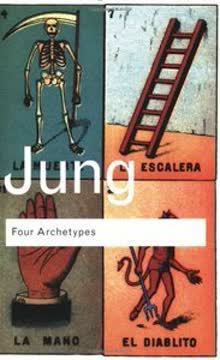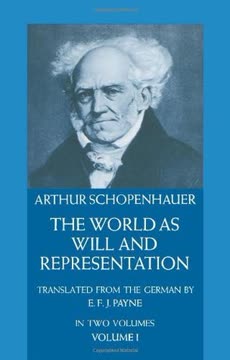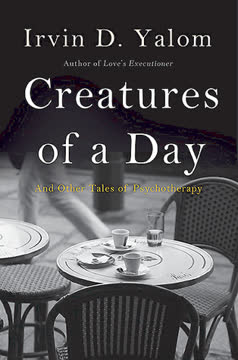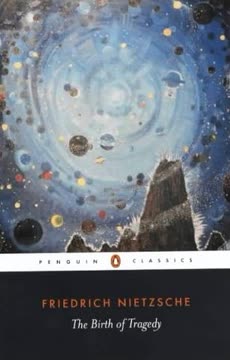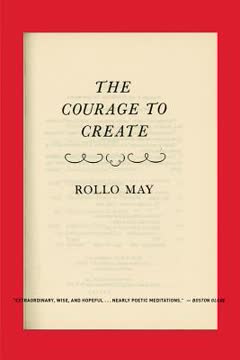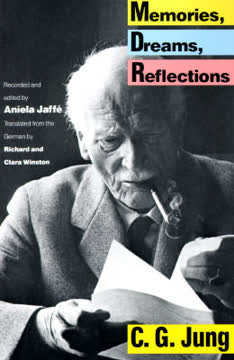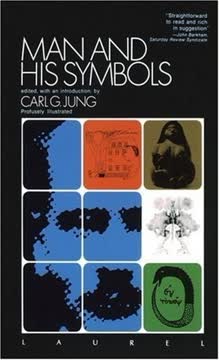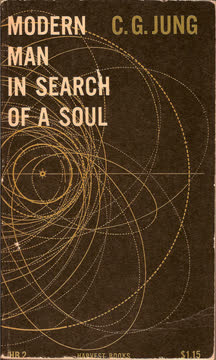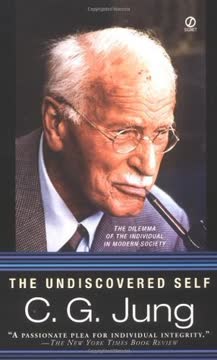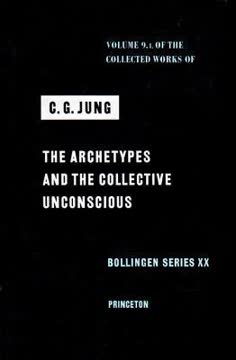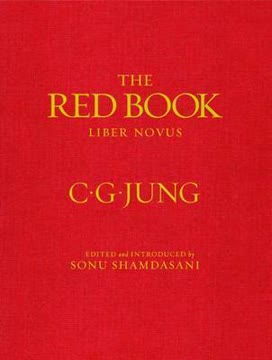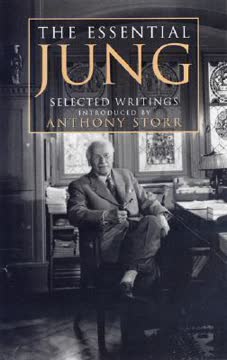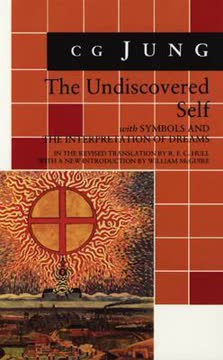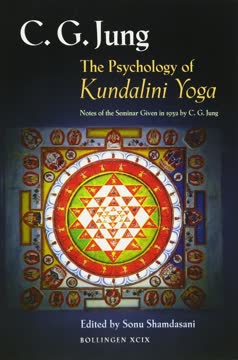Key Takeaways
1. The Collective Unconscious is a universal, inborn psychic layer.
This deeper layer I call the collective unconscious.
Beyond personal experience. Jung proposed that beneath the personal unconscious (repressed memories, forgotten experiences) lies a deeper, universal layer shared by all humanity. This collective unconscious is not acquired through personal life but is inherited, forming a common psychic substrate. It contains patterns and modes of behavior that are essentially the same across all individuals and cultures.
Source of universal symbols. The contents of this deeper layer are called archetypes. Unlike personal complexes, which are feeling-toned clusters of ideas from individual history, archetypes are universal, primordial images. They are the psychic structures that predispose us to experience and react to the world in specific, universally human ways.
Foundation of the psyche. This inborn psychic structure is not an empty vessel but a complex, defined entity present from birth. Just as animals possess preformed instincts, humans possess a preformed psyche with inherent patterns. These patterns, the archetypes, are the "human quality" of our being, shaping our activities and fantasies.
2. Archetypes are inherited patterns shaping human experience.
In themselves, archetypal images are among the highest values of the human psyche; they have peopled the heavens of all races from time immemorial.
Forms, not content. Archetypes are not fixed ideas or images but rather potential forms or patterns of behavior and representation. They are like the axial system of a crystal, preforming the structure but not determining the final, concrete shape. The specific content of an archetype is filled in by individual conscious experience.
Spontaneous emergence. These primordial images are not solely disseminated through tradition, language, or migration. They can arise spontaneously in individuals, at any time and place, without external influence. This spontaneous emergence is most visible in products of creative fantasy, dreams, and visions.
Influence on thought. Archetypes are unconscious but active, living dispositions that preform and continually influence our thoughts, feelings, and actions. They are the source of the "représentations collectives" found in myths, fairytales, and primitive worldviews, though these conscious forms are already elaborated versions of the raw archetypal content.
3. The Mother Archetype embodies profound duality: nurturing and terrifying.
I formulated the ambivalence of these attributes as “the loving and the terrible mother.”
Infinite aspects. The mother archetype appears in countless forms, including the personal mother, grandmother, stepmother, and figures like goddesses (Mother of God, Virgin, Sophia). It also manifests symbolically in places or things associated with fertility, protection, or origin, such as:
- Paradise, Kingdom of God
- Earth, sea, woods, caves, springs
- Vessels (cornucopia, baptismal font)
- Animals (cow, hare)
Positive and negative. This archetype holds a fundamental ambivalence. Positively, it signifies maternal solicitude, sympathy, wisdom, helpful instincts, and all that cherishes and sustains life. It is the place of magic transformation and rebirth. Negatively, it connotes anything secret, hidden, dark, devouring, seductive, poisonous, terrifying, and inescapable, like fate or the witch and dragon figures.
Beyond the personal. While the personal mother is the first carrier of this archetype, the powerful effects attributed to her often stem from the archetype projected onto her, not solely from her actual personality traits. This projection gives the personal mother a mythological background and invests her with immense, sometimes frightening, authority and numinosity in the child's psyche.
4. Mother Complexes uniquely impact sons and daughters.
The effects of the mother-complex differ according to whether it appears in a son or a daughter.
Pathological and positive. While often discussed in psychopathology as a source of injury, the mother-complex, rooted in the mother archetype, also has significant positive effects. It develops when the child's instincts are disturbed, constellating the archetype and producing fantasies that interfere with the relationship to the personal mother.
Impact on sons. In sons, the mother-complex is complicated by the anima archetype (the man's inner feminine counterpart). Typical negative effects include homosexuality (heterosexuality tied to the mother), Don Juanism (seeking the mother in every woman), and sometimes impotence. Positively, it can lead to a finely differentiated Eros, capacity for friendship, aesthetic sense, teaching gifts, historical feeling, religious depth, and spiritual receptivity.
Impact on daughters. In daughters, the mother-complex is more direct, leading either to an overdevelopment or atrophy of feminine instincts.
- Hypertrophy: Exaggerated maternal instinct, life centered solely on childbirth and caring for others, often masking an unconscious will to power.
- Overdeveloped Eros: Maternal instinct is suppressed, leading to an intense, often destructive, focus on personal relationships, sometimes unconsciously incestuous with the father.
- Identity with Mother: Paralysis of feminine initiative, projection of personality onto the mother, leading a shadow existence, often attractive to men projecting their anima.
- Resistance to Mother: Strong opposition to maternal supremacy, leading to intellectual development (often masculine traits) to break the mother's power, but potentially injuring natural instincts.
5. Rebirth is a fundamental, often symbolic, process of transformation.
Nature herself demands a death and a rebirth.
Purely psychic reality. Rebirth is not a physically observable process but a purely psychic reality transmitted through personal statements and experiences. The very existence of the concept across cultures signifies a store of underlying psychic experiences. It is a primordial affirmation based on an archetype.
Forms of rebirth:
- Metempsychosis/Transmigration: Life prolonged through different bodily existences (continuity of karma).
- Reincarnation: Continuity of personality across rebirths, potentially accessible to memory.
- Resurrection: Re-establishment of existence after death, involving a change or transformation of being (carnal or subtle body).
- Renovatio (Rebirth proper): Renewal within the span of individual life, either functional improvement or essential transmutation (mortal to immortal, human to divine).
- Participation: Indirect transformation through witnessing or participating in a rite (Mass, pagan mysteries) where transformation occurs outside the individual, granting grace.
Psychological transformation. Beyond ritual, rebirth manifests as subjective transformations of personality. This can involve diminution (loss of soul, abaissement du niveau mental) or enlargement (accretion of new contents, encounter with the greater personality or Self). These changes are not always mystical but are familiar in psychology, often appearing in dreams and visions.
6. The Spirit Archetype represents dynamic, paradoxical forces.
The archetype of spirit in the shape of a man, hobgoblin, or animal always appears in a situation where insight, understanding, good advice, determination, planning, etc., are needed but cannot be mustered on one’s own resources.
Beyond intellect. The concept of "spirit" is multifaceted, often contrasting with matter or nature. Psychologically, it is a dynamic principle, active, winged, and vivifying, capable of spontaneous movement and image production independent of senses. It is the source of inspiration, enthusiasm, and creative power, often felt as an invisible presence or daimonion.
Manifestations in dreams/folklore. The spirit archetype frequently appears as a "wise old man" (magician, doctor, priest, guru) or sometimes as a boy or youth. These figures emerge when the hero is in a desperate situation requiring insight or a lucky idea beyond their conscious capacity. They provide guidance, magical talismans, or unexpected power to succeed, compensating for spiritual deficiency.
Ambivalence and paradox. Like other archetypes, the spirit has a dark, chthonic, or negative side. It can appear as a dwarf, a one-sided figure, or even an evil magician or spirit. This duality reflects the paradoxical nature of the unconscious and the bewildering interplay of good and evil. The spirit can be a life-bringer and a death-dealer, embodying the tension of opposites.
7. The Trickster Archetype embodies the chaotic, unconscious shadow.
He is both subhuman and superhuman, a bestial and divine being, whose chief and most alarming characteristic is his unconsciousness.
Ancient psychologem. The trickster is a universal, archetypal psychic structure found in mythologies worldwide, representing an absolutely undifferentiated human consciousness close to the animal level. He is a chaotic, foolish, yet sometimes cunning figure who performs senseless acts but also inadvertently brings about good or order.
Shadow figure. The trickster is a collective shadow figure, a summation of the inferior traits in individuals. His antics reflect the annoying "accidents," "hoodoos," or "mischievousness of the object" that thwart conscious will in modern life. As civilization progresses, this collective figure breaks up, its energy becoming personalized as the individual shadow or projected onto others.
Paradoxical nature. The trickster is a combination of opposites: divine and animal, creator and destroyer, saviour and victim, wise and foolish. His unconsciousness is his defining trait, leading to physical disunity (hands fighting) and bizarre actions (detaching his anus). Yet, his story often shows a gradual development towards more useful and sensible behavior, hinting at a civilizing process within the archetype itself.
8. Engaging with archetypes is essential for psychological growth (Individuation).
Our task is not, therefore, to deny the archetype, but to dissolve the projections, in order to restore their contents to the individual who has involuntarily lost them by projecting them outside himself.
Restoring lost contents. Archetypes are not mere prejudices but valuable psychic assets. When projected onto external figures (like the personal mother or political leaders), their numinous energy is lost to the individual, leading to fixation or dependence. Psychological work involves dissolving these projections to reintegrate the archetypal contents into the individual psyche.
Confronting the unconscious. Engaging with archetypes, often encountered in dreams, visions, or active imagination, requires a dialectical procedure, a "coming to terms" with these autonomous contents. This process, sometimes a dramatic inner dialogue, is crucial for psychological development and can lead to a transformation of personality.
Path to the Self. The encounter with archetypes, particularly figures like the wise old man or the anima/animus, is part of the individuation process. This is the journey towards realizing the Self, the psychic totality that includes both conscious and unconscious, ego and archetype. Symbols of this process, like the mandala or the alchemical stone, represent the union of opposites and the attainment of wholeness.
9. Consciousness depends on acknowledging the unconscious and its opposites.
Consciousness can only exist through continual recognition of the unconscious, just as everything that lives must pass through many deaths.
Discrimination of opposites. Consciousness arises from the discrimination of opposites (the paternal Logos principle). However, maintaining consciousness requires a constant relationship with its counterpart, the unconscious (the maternal principle of primal unity and darkness). Denying or repressing the unconscious leads to one-sidedness and psychological imbalance.
Danger of one-sidedness. Over-reliance on reason and intellect, while valuable, can cut man off from his roots in nature and the primordial images of the unconscious. This leads to a de-souled world, materialism, and a dangerous inflation of the ego, making man susceptible to possession by unconscious forces, as seen in mass movements and historical catastrophes.
Integration, not denial. The goal is not to abolish the irrational or the "dark" side of the psyche but to integrate it. This involves recognizing the inherent paradoxes and ambivalence within ourselves and the world. Ignoring the autonomous power of the unconscious does not make it disappear; it merely allows it to operate unseen, often with destructive consequences.
Last updated:
FAQ
1. What is "Four Archetypes" by C.G. Jung about?
- Exploration of Archetypes: The book delves into four fundamental archetypes—Mother, Rebirth, Spirit, and Trickster—exploring their psychological significance and manifestations in myths, dreams, and fairytales.
- Collective Unconscious: Jung introduces and elaborates on the concept of the collective unconscious, a universal psychic substrate shared by all humans, populated by archetypes.
- Psychological Development: The essays examine how these archetypes influence individual psychological development, personal complexes, and cultural phenomena.
- Integration and Individuation: Jung discusses the importance of recognizing and integrating these archetypes for achieving individuation, or psychological wholeness.
2. Why should I read "Four Archetypes" by C.G. Jung?
- Foundational Jungian Concepts: The book provides a clear introduction to some of Jung’s most influential ideas, making it essential for anyone interested in psychology, mythology, or personal development.
- Practical Relevance: Understanding archetypes can help readers recognize patterns in their own lives, relationships, and dreams, offering tools for self-awareness and growth.
- Cultural Insight: Jung’s analysis connects individual psychology to universal myths and symbols, enriching the reader’s appreciation of literature, art, and religion.
- Accessible Essays: The book is structured as a series of essays, making complex ideas approachable and allowing readers to engage with topics of particular interest.
3. What are the key takeaways from "Four Archetypes" by C.G. Jung?
- Archetypes Shape Experience: Archetypes are universal, inherited patterns that shape human experience, behavior, and imagination.
- Mother Archetype’s Dual Nature: The mother archetype embodies both nurturing and destructive aspects, influencing personal complexes and cultural symbols.
- Rebirth as Transformation: Rebirth is a multifaceted concept, representing psychological renewal, transformation, and the process of individuation.
- Spirit and Trickster: The spirit archetype appears as wise guidance or inspiration, while the trickster represents the shadow, chaos, and the potential for transformation through disruption.
4. What is Jung’s definition of an archetype in "Four Archetypes"?
- Universal Psychic Patterns: Archetypes are innate, universal prototypes or forms that structure human experience and behavior.
- Not Fixed Content: They are not inherited ideas or images, but rather predispositions to perceive and respond in certain ways; their content is shaped by individual and cultural experience.
- Manifest in Symbols: Archetypes manifest in myths, dreams, fairytales, and religious imagery, often as recurring motifs or characters.
- Form, Not Substance: Jung likens archetypes to the axial system of a crystal—an invisible pattern that shapes the visible form.
5. How does Jung describe the Mother Archetype in "Four Archetypes"?
- Wide Range of Forms: The mother archetype appears as personal mothers, grandmothers, goddesses, the earth, the church, and even objects like vessels or caves.
- Positive and Negative Aspects: It encompasses both nurturing, protective qualities and destructive, devouring, or suffocating traits.
- Mother Complex: The archetype underlies the mother complex, influencing both sons and daughters in different ways, with potential for both psychological growth and pathology.
- Cultural and Personal Impact: The mother archetype shapes individual development and is reflected in cultural myths, religious figures, and collective symbols.
6. What does Jung mean by "Rebirth" in "Four Archetypes"?
- Multiple Forms: Jung identifies five forms of rebirth, including metempsychosis (transmigration), reincarnation, resurrection, psychological renewal, and participation in transformation.
- Psychological Renewal: Rebirth often refers to a transformation or renewal within a person’s lifetime, not just literal or religious interpretations.
- Individuation Process: Rebirth is closely linked to individuation, the process of becoming one’s true self by integrating unconscious contents.
- Symbolic Representation: Myths, rituals, and dreams about rebirth symbolize the psyche’s drive toward wholeness and self-realization.
7. How does Jung explain the Spirit Archetype in "Four Archetypes"?
- Wise Old Man Motif: The spirit archetype often appears as a wise old man, magician, teacher, or guide in dreams and fairytales.
- Dual Nature: It can be both benevolent (offering guidance, wisdom, and insight) and ambiguous or even dangerous, reflecting the complexity of the unconscious.
- Source of Inspiration: The spirit archetype is associated with inspiration, creativity, and the drive toward meaning and order.
- Compensatory Function: It often emerges when conscious resources are exhausted, providing solutions or new perspectives from the unconscious.
8. What is the Trickster Archetype according to Jung in "Four Archetypes"?
- Embodiment of the Shadow: The trickster represents the unconscious, chaotic, and irrational aspects of the psyche, often manifesting as a mischievous or foolish figure.
- Cultural Universality: Trickster figures appear in myths and folklore worldwide, from Native American stories to medieval carnivals and alchemical symbolism.
- Agent of Transformation: While disruptive and amoral, the trickster can catalyze change, self-awareness, and even healing by exposing hidden truths or breaking taboos.
- Integration and Growth: Recognizing the trickster within oneself is essential for psychological integration and avoiding projection of one’s shadow onto others.
9. How does Jung’s concept of the collective unconscious relate to the four archetypes in "Four Archetypes"?
- Foundation of Archetypes: The collective unconscious is the deep, universal layer of the psyche where archetypes reside, shared by all humans regardless of culture.
- Not Personal Experience: Unlike the personal unconscious, the collective unconscious is not shaped by individual experience but is inherited and universal.
- Archetypes as Contents: The four archetypes—Mother, Rebirth, Spirit, Trickster—are among the primary contents of the collective unconscious.
- Manifestation in Culture: These archetypes surface in myths, dreams, and cultural symbols, influencing both individual psychology and collective behavior.
10. What practical advice or methods does Jung offer in "Four Archetypes" for working with archetypes?
- Awareness and Integration: Jung emphasizes the importance of recognizing archetypal patterns in one’s own psyche, especially as they appear in dreams, fantasies, and projections.
- Dissolving Projections: He advises dissolving projections (e.g., seeing the mother archetype only in one’s personal mother) to reclaim psychological energy and foster individuation.
- Dialogue with the Unconscious: Jung suggests engaging in inner dialogue (active imagination) with archetypal figures, such as the wise old man or inner friend, to gain insight and balance.
- Balancing Opposites: He encourages maintaining awareness of the tension between opposites (e.g., rational and irrational, light and dark) as a path to psychological wholeness.
11. What are some of the best quotes from "Four Archetypes" by C.G. Jung, and what do they mean?
- “Archetypes are among the highest values of the human psyche; they have peopled the heavens of all races from time immemorial.”
This highlights the universal and enduring significance of archetypes in shaping human imagination and spirituality. - “There is no consciousness without discrimination of opposites.”
Jung stresses that awareness and growth arise from confronting and integrating opposing forces within the psyche. - “The mother is the first world of the child and the last world of the adult.”
This underscores the lifelong psychological impact of the mother archetype. - “The trickster is a primitive ‘cosmic’ being of divine-animal nature, on the one hand superior to man because of his superhuman qualities, and on the other hand inferior to him because of his unreason and unconsciousness.”
Jung captures the paradoxical, transformative role of the trickster in both individual and collective psychology.
12. How does "Four Archetypes" by C.G. Jung connect to broader themes in Jungian psychology and its relevance today?
- Foundation for Jungian Analysis: The book’s exploration of archetypes underpins much of Jungian analytical psychology, including dream interpretation, therapy, and cultural analysis.
- Relevance to Modern Life: Archetypal patterns continue to shape personal identity, relationships, and societal trends, making Jung’s insights valuable for contemporary self-understanding.
- Integration of Science and Myth: Jung bridges psychology, mythology, and spirituality, offering a holistic approach to understanding the human mind.
- Path to Wholeness: The recognition and integration of archetypes are presented as essential steps toward individuation, healing, and living a more conscious, meaningful life.
Review Summary
Four Archetypes receives mixed reviews, with many praising Jung's insights into human psychology and mythology. Readers appreciate the exploration of archetypes and their significance in understanding the human psyche. Some find the book challenging, requiring background knowledge in psychology and mythology. Critics note outdated views on gender and sexuality. Overall, the book is considered valuable for those interested in Jungian psychology, offering deep analysis of the Mother, Rebirth, Spirit, and Trickster archetypes. Many readers find it thought-provoking and applicable to personal growth and literary analysis.
Similar Books
Download PDF
Download EPUB
.epub digital book format is ideal for reading ebooks on phones, tablets, and e-readers.
